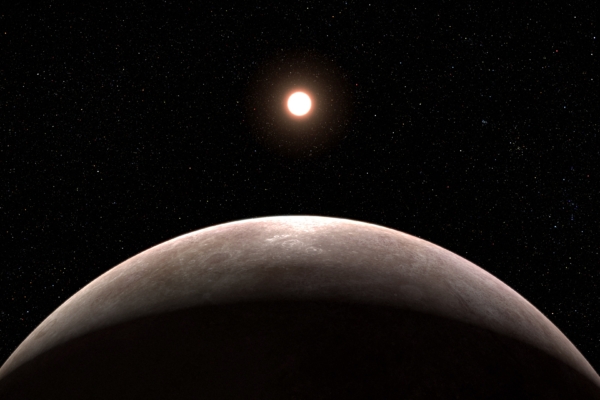In a recent discovery by astronomers in the Milky Way galaxy, a Earth-like exoplanet located thousands of light-years away from Earth has been found orbiting a star. This exoplanet bears similarities to what Earth might look like in 8 billion years, offering a glimpse into Earth’s distant future.
According to a press release from the University of California, Berkeley on September 26th, astronomers from the university observed this Earth-like exoplanet using the W. M. Keck Observatory located in Hawaii.
This rocky planet, situated 4,000 light-years away from Earth, orbits a white dwarf star with a radius approximately double that of the Earth’s current orbit, while the mass of the white dwarf star is only half that of the Sun.
This discovery sheds light on a potential fate for Earth. As the Sun eventually expands into a red giant, engulfing Mercury and Venus in the process, it might grow to a size larger than Earth’s orbit today. This expansion would force planets to migrate to more distant orbits, diminishing the chances of Earth surviving in a more remote location from the Sun.
The outer layers of the red giant will eventually dissipate, leaving behind a dense white dwarf. While its volume may not exceed that of planets, its mass is equivalent to a star. If Earth manages to survive until then, its orbit might double in size compared to its current position, surpassing even the orbit of Mars.
This finding explains the evolution of main-sequence stars like the Sun transitioning from the red giant stage to a white dwarf, and how this process influences planets in their vicinity.
Some studies suggest that for the Sun, this transformation could commence in approximately 1 billion years, leading to the evaporation of Earth’s oceans and a doubling of its orbital radius, assuming the Sun does not consume Earth during its expansion. The transition of the Sun from a red giant to a white dwarf is estimated to occur 8 billion years from now.
Keming Zhang, a former doctoral student from the university who currently serves as a postdoctoral researcher at the University of California San Diego, leading this research, noted that astronomers have yet to reach a consensus on whether Earth will be engulfed by the Sun, which will have turned into a red giant in 6 billion years.
Zhang stated, “Regardless, Earth has only about 1 billion years left in its habitable time, as the oceans will evaporate due to runaway greenhouse effects—long before the potential engulfment by a red giant.”
Jessica Lu, an associate professor of astronomy at the University of California, Berkeley, emphasized the uncertainty surrounding the survival of life on Earth during the Sun’s red giant phase. The crucial point remains that Earth must not be consumed by the Sun after it turns into a red giant.
Lu remarked, “The (stellar) system discovered by Zhang is an example of a planet (possibly an Earth-like exoplanet originally similar in size to Earth’s orbit) surviving during the red giant phase of its parent star.”
Zhang mentioned that even if Earth were to be engulfed during the Sun’s red giant phase, humanity could seek refuge beyond the solar system. Moons of Jupiter such as Europa, Callisto, Ganymede, and Saturn’s moon Enceladus appear to have frozen oceans and could potentially thaw as the Sun expands.
Zhang explained, “When the Sun becomes a red giant, the habitable zone will shift closer to the orbits of Jupiter and Saturn, with many of these moons turning into ocean worlds. I believe that in such a scenario, humanity could potentially migrate there.”
The research findings were published on September 26th in the journal “Nature Astronomy.”

